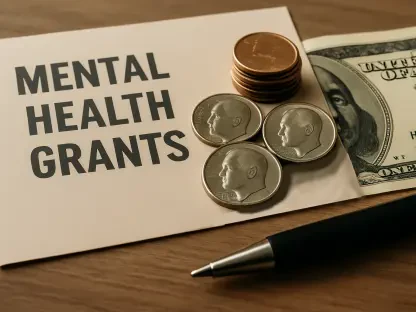Teaching has always been a cornerstone of society, yet in 2025, educators face an unprecedented economic battle that threatens their livelihoods and the future of education itself. Imagine a dedicated teacher, grading papers late into the night, only to spend the next morning driving for a rideshare app just to pay rent. This harsh reality is becoming all too common as inflation continues to outpace salaries, squeezing teachers into financial corners they never anticipated. The struggle is not just about money—it’s about the erosion of passion, mental health, and the very ability to shape young minds.
The importance of this issue cannot be overstated. Teachers are the backbone of the education system, yet their financial instability directly impacts student outcomes, school quality, and long-term societal progress. As inflation drives up the cost of living, the profession risks losing talented individuals to better-paying industries, creating a crisis that ripples through communities. This story delves into the hidden costs, personal tolls, and potential solutions, shedding light on a problem that demands urgent attention.
The Hidden Cost of Teaching in Tough Economic Times
Inflation has turned the noble profession of teaching into a daily grind for survival. Across the country, educators are finding that their paychecks, often stagnant for years, no longer cover basic needs like housing or groceries. Many are forced to make tough choices—whether to cut back on essentials or take on extra work that leaves them drained before they even step into the classroom.
This economic strain is reshaping the identity of teaching itself. No longer just a calling, it has become a balancing act between passion and practicality, where financial worries overshadow lesson planning. Schools in both rural and urban districts report growing numbers of teachers questioning their career paths, with some leaving mid-year due to unsustainable living costs. The silent crisis is palpable, affecting not just individuals but entire educational ecosystems.
Why Inflation Hits Teachers Harder Than Most
Unlike many professions where salaries adjust to market trends, teachers often face rigid pay structures that fail to keep pace with rising costs. Inflation, driving up expenses for everything from healthcare to transportation, bites deeper into their budgets because their wages remain tied to outdated scales. This disparity is particularly acute in the public sector, where budget constraints limit raises despite skyrocketing living expenses.
Moreover, the emotional and intellectual demands of teaching amplify the impact of financial stress. Educators pour their energy into students, often at the expense of personal well-being, leaving little reserve to handle economic hardship. Studies indicate that teachers are among the most vulnerable to income inequality, with their compensation lagging behind comparable professions requiring similar levels of education and skill.
The broader implications are troubling. When teachers struggle to afford a stable life, the quality of education suffers, as does the pipeline of future talent. This vulnerability underscores a systemic issue: the undervaluing of a profession critical to societal growth, now worsened by relentless economic pressures.
The Ripple Effects of Inflation on Teachers’ Lives
Financial hardship casts a long shadow over every aspect of a teacher’s existence. Declining real wages mean that roughly 20% of educators work second jobs during the school year, a number climbing to nearly 30% in the summer months. This moonlighting, whether tutoring or working in retail, saps time and energy that could be spent on lesson preparation or rest, directly diminishing classroom effectiveness.
Mental health bears an equally heavy burden. Constant worry over bills fuels anxiety and burnout, eroding teachers’ confidence in their ability to inspire and educate. This diminished self-efficacy doesn’t just affect them—it translates into lower student engagement and achievement, creating a vicious cycle of stress and underperformance that harms entire school communities.
Career trajectories are also shifting under this pressure. Economic challenges are pushing experienced educators toward higher-paying fields like corporate training or technology, resulting in a significant loss of expertise in schools. Regional disparities worsen the problem, with urban teachers in high-cost areas facing housing crises that rural counterparts might escape, leading to uneven staffing shortages and inconsistent educational quality across districts.
Voices from the Classroom: Real Stories and Expert Insights
Behind the statistics are human stories that paint a vivid picture of struggle. A middle school teacher in a major city shared how she works weekends at a local café just to afford her commute, admitting that exhaustion often dulls her classroom energy. Her experience is not unique—countless educators echo this sentiment, describing a profession they love being tainted by financial insecurity.
Experts weigh in with sobering analysis. Dr. Jason Richardson, an educator and academic, emphasizes, “When teachers are preoccupied with survival, their ability to nurture students diminishes—it’s a tragedy for the entire system.” His perspective aligns with research showing a direct correlation between financial stability and professional performance, highlighting how economic woes steal focus from teaching.
These narratives and insights reveal a deeper truth: inflation isn’t just a numbers game; it’s a personal crisis for those shaping the next generation. From rural towns to bustling cities, the strain is universal, manifesting in sleepless nights, tough career choices, and a growing sense of disillusionment among those once driven by purpose.
Strategies to Support Teachers Amid Rising Costs
Addressing this crisis requires targeted, practical measures to bolster teachers’ financial footing. Advocating for salary adjustments tied to inflation rates is a critical first step, ensuring that paychecks reflect the true cost of living. Policymakers and unions must prioritize this to prevent further erosion of purchasing power, making the profession viable long-term.
Beyond wages, enhanced benefits can make a tangible difference. Comprehensive health insurance, housing stipends, or subsidized childcare can alleviate key pressure points, allowing educators to focus on their craft. Schools can also reduce the need for moonlighting by offering paid opportunities like professional development or summer programs within the system, preserving teachers’ energy for their primary roles.
Community involvement offers another layer of support. Local businesses and organizations can partner with districts to provide discounts or resources specifically for teachers, recognizing their invaluable contribution. These combined efforts—spanning policy, institutional, and grassroots levels—aim to rebuild financial stability and self-efficacy, ensuring that educators remain committed to their vital work despite economic challenges.
Final Reflections and Next Steps
Looking back, the struggle of teachers against inflation paints a stark picture of resilience amid adversity. Their stories of juggling multiple jobs and battling burnout reveal a profession at a crossroads, where passion often clashes with practicality. The systemic undervaluing of educators, compounded by economic pressures, stands as a barrier to sustaining quality education.
Moving forward, actionable solutions must take center stage. Stakeholders at all levels—government, school boards, and local communities—should commit to inflation-adjusted compensation and robust benefits packages over the coming years, from 2025 to 2027, to secure teachers’ livelihoods. Exploring innovative funding models, such as public-private partnerships, could also inject much-needed resources into the system. Ultimately, safeguarding teachers’ well-being is an investment in the future, ensuring that the classroom remains a place of inspiration rather than struggle.









